|
Every now and then I will write a post about a celebrity who has passed away, and whether or not their Estate Plan was effective (if there was a plan in place at all). While the Estates of the rich and famous are significantly larger than most of my clients, the lessons that are learned from their mistakes are important to note. This is not a complete list by any means; my hope is that by reviewing some mistakes that have been made in the past, they can be prevented for you and your estate. 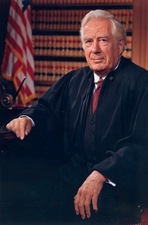 11. Warren E. Burger U.S. Supreme Court Chief Justice Warren E. Burger took a do-it-yourself approach to his estate plan. We have all seen the ads or commercials to make your own Will or Trust, unfortunately those who choose to do so often leave their family and loved ones with the mess that results in a poorly drafted Estate Plan. This was the case for Chief Justice Warren Burger who elected to write his own Will. The 176 self-typed words of the Will that Burger drafted gave 1/3 of his 1.8 million dollar estate to his daughter and 2/3 of his estate to his son. Despite his close ties to the legal system, the document neglected to address several key factors that a properly drafted Estate Plan must address; the most important of which being estate taxes. Because of this, the estate was taxed a hefty $450,000 and his family had to go to Probate court in order to sell his property. Lesson: Even attorneys and judges are frequently not equipped to create their own Estate Plan. The do-it-yourself approach most often leads to unnecessary taxes on the estate, and even Probate court. Meeting with an experience Estate Planning attorney to ensure that you have created a successful plan is the best way to protect your family and loved ones from these (and other) unnecessary negatives. 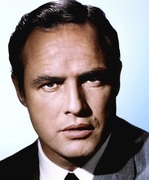 10. Marlon Brando The legendary actor was well known for not aligning with convention and often shocked the industry with his behavior. While this added an edge to his public view, it did not lead to a successful Estate Plan. In the weeks leading up to his death, Brando became paranoid and was of questionable mental capacity. Despite this, he signed a Will, thirteen days before he passed away. The document replaced his personal assistant of 50 years and his business manager of 40 with new executors. After his death, this change resulted in nearly 30 lawsuits. The executors that he appointed made several decisions on behalf of the estate that many believe Brando would not have approved of. This included suing numerous individuals and companies, and building an exclusive resort on Brando’s private island. These changes also led to numerous battles between the estate and individuals who claimed that Brando had made them oral promises to certain assets. In the end both the individuals and the estate lost money and time in the legal proceedings. Lesson: Oral promises that are made are by no means legally binding, and making them without backing them up in an Estate Planning document can lead to unhappy friends and family as well as financial losses for your estate. Advanced planning 9. Steve McNair NFL quarterback Steve McNair, who spent the majority of his football career with the Tennessee Titans, was shot and killed by his girlfriend (who then turned the gun on herself) at age 36. At the time of his death, he had a wife and children, but no Will. Because McNair had not named an executor, his assets were frozen and the court selected someone to handle his estate. The court appointed his widow, who was able to provide for their children, however this was after the assets had been held up during the Probate process. It also gave her control of other assets that were held in his name, most notable being the home that he had built for his mother. The property sat on 45 acres of land that was in McNair’s name, and the football star’s mother had been living there for years at the time of his death. As the estate’s executor, McNair’s widow set monthly rent at $3,000, which his mother could not afford and forced her to move out of the home. Lesson: Like others on this list, McNair’s mistake was not having a plan in place. Although he passed away suddenly and at a very young age, as a parent he should have had an Estate Plan in place in order to make sure that his children were taken care of in accordance with his wishes. A well drafted plan would have also prevented any confusion with the property, and indicate if his mother was to receive the house outright; or a life estate in the house; or not given any interest in the property.  8. Heath Ledger Heath Ledger is famously remembered for his chilling performance as the Joker in the Batman movie. When he passed away, due to a prescription drug overdose in 2008, he had a Will. The document had been executed three years prior to his passing and left his estate to his parents and sister. Although Ledger had planned for the future in terms of his estate, he did not take into account the life events that followed in the years after his Will was executed. Failing to update his Will meant that his partner and mother of his child; Michelle Williams, along with his daughter (who was born after the Will was signed) were not mentioned. Due to the laws surrounding this issue and the cooperation of his family, Ledger’s daughter received the assets from Ledger’s Estate. However, it is impossible to know for sure if all of Ledger’s wishes were met in this regard. Lesson: Many people draft their Estate Plans and then after they are put away, also put them out of their mind. When major life events occur, in Ledger’s case having a child, Estate Planning documents should always be re-visited. Although there is not a set time for re-visiting your plan, it is recommended that you review it every three years as well as when major life events occur. 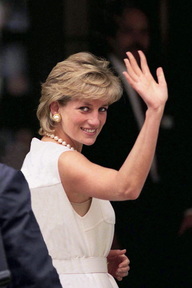 7. Princess Diana While actor Health Ledger’s situation provides a lesson on the importance of updating your plan, Princess Diana’s Estate Plan shows the importance of updating your estate plan properly. While she had a Will in place at the time of her death, she had also prepared a letter of wishes. The problem being that when her executors began dividing up her estate, they chose to alter numerous wishes outlined in the Princess’s letter of wishes. The letter of wishes was created after the Will, and stated that her jewelry and ¾ of her estate be given to her two sons, and the final ¼ be split among her god children. However when it came time for final distributions, her god children were not given their shares (an estimated $160,000) but instead a small trinket, and her sons received their shares not at age 25 (as outlined) but at age 30 instead. Lesson: Updating your Estate Plan is crucial as life events occur, and when doing so it is even more important to make the changes with an Estate Planning attorney. 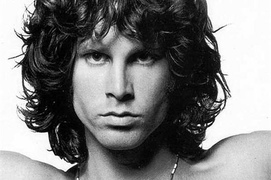 6. Jim Morrison Legendary front-man for the Doors, Jim Morrison died at the now infamous age of twenty-seven (joining a group of other rock stars have died at age 27). While the singer lives on through his music, and his image adorns the walls of countless college dorm rooms, he can also be remembered for the saga his Estate went through after his death. Because Morrison lived a risky lifestyle and passed away at such a young age, it is somewhat surprising that he took some steps in terms of Estate Planning. Before his death, he created a simple Will. While this is a positive lesson that you can never begin planning ahead too early (in terms of Estate Planning), there are some things that the simple Will does not account for. The plan left Morrison’s estate to then girlfriend Pamela Courson, provided she lived a minimum of three months following his passing. Some have speculated that this was included in the document because Morrison feared that Courson may take her own life after he died, however it may also have been a consideration regarding the drug habits that the two shared. Either way, if Courson passed away within three months of Morrison, the estate was to be distributed to Morrison’s siblings. Although Courson did meet the requirements, the estate’s assets were tied up in the court due to countless paternity claims and claims from the singer’s former band mates. She then passed away three years later, without a Will, and thus the Morrison estate was distributed to her parents. After Morrison’s parents fought this in court, the estate was eventually split between the two sets of parents. Lesson: While Morrison did have a Will created at a very young age, because it was a simple Will and not a comprehensive Estate Planning document it was not a complete plan. In the end, Morrison’s estate was split between his parents (who he was not close with) and his girlfriend’s parents (who were reportedly not his biggest fans). 5. Ted Williams Baseball legend Ted Williams is another example of improperly updating an Estate Plan. Williams passed away with a Will in place and a holographic Will that was written after the first document was executed. While the majority of circumstances where conflicting documents surface are related to a dispute over money, in this case the dispute was over the disposition of his remains. Williams executed the original Will in 1996, and it stated that the baseball star wanted to be cremated and have his ashes dispersed in the ocean near Florida. However, after his death two of his children from his second marriage came forward with a reportedly grease stained note that had been signed while Williams was in the hospital three years after he executed his Will. The note claimed that Williams desired to be cryogenically frozen instead. The debate caused a split in the family, and even after William’s was frozen, his eldest daughter fought to have his remains unfrozen and cremated. When she ran out of money she was forced to give up on the case. Lesson: When your wishes change, it is crucial to have them properly adjusted to reflect the changes, especially when it comes to something as sensitive as burial or cremation. 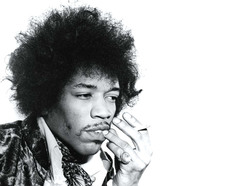 4. Jimi Hendrix The music legend and rock icon passed away at 27 without having an Estate Plan in place. At the time of his death his potential heirs included, his father Al, brother Leon, step-sister Janie, a girlfriend who he had been living with, a woman who claimed to be his fiancé, and two children that were born out of wedlock. With no Estate Planning documents, Hendrix’s assets were decided upon in court and went solely to his Father. Al put together his own Estate Plan and sold the rights to Hendrix’s music (making him a reported eighty million), a move he later claimed to have no part in. In the years that followed, he updated his Estate Plan to remove Leon as a beneficiary in order to give his share to his adoptive daughter, Janie. Janie also became Trustee at this time. Because Jimi and Leon were very close growing up, and even toured together after Jimi Hendrix became a house-hold name, this change sent shock waves through the family, and in the end left Leon with nothing. In 2004, Leon sued Janie on grounds of undue influence, and claimed she was taking advantage of Al and pressuring him to remove Leon from his beneficiaries. The attorney’s fees ended up costing Leon a reported three million, and during the trial Janie revealed that Leon was a former drug addict. This not only became public knowledge, but resulting in the court disinheriting Leon. Lesson: Do not procrastinate when it comes to Estate Planning. The battle over Jimi Hendrix’s estate lasted over thirty years and could have easily been avoided with the creation of an estate plan. Many of those who were closest to Hendrix did not receive anything from his estate, which speaks to the unfortunate consequence of neglecting to create a plan. 3. Phillip Seymour Hoffman After a roller coaster film career, Phillip Seymour Hoffman left a reported thirty five million to his partner and the mother of his children, Marianne O’Donnell. When his Estate Plan was drafted, the pair’s first son was only a year old, and in the years that followed they had two daughters. The plan however was not updated and did not account for the growing family. Hoffman left his entire estate to O’Donnell outright, this coupled with the fact that the two had not married left the estate defenseless against some costly estate taxes. A reported fifteen of the thirty five million dollars went to the IRS. Lesson: It is hard to say the intentions of Hoffman when drafting the documents, and there have been reports that stated he did not leave money to his children because he did not want them to become trust fun kids. However, because he was not married to O’Donnell and because he left his estate to her free of trust, his assets were very heavily taxed. 2. Michael Jackson When the king of pop passed away, it seemed as though the whole world mourned. Now, a little over six years later, fans still frequently visit his grave and purchase his music. Reports have been released that state that although his estate was bankrupt when he passed away, it is now generating more money than ever before. Since his death in 2009, Jackson’s estate has earned a reported two billion dollars. A Wall Street Journal article reported that the Neverland Ranch has been listed at 100 million dollars, adding to the value of the estate. While this is impressive in every sense, it has also lead to a battle between the estate and the IRS in terms of taxes. Lesson: While the numbers associated with the Jackson estate have quite a few more zeros than the average American, for those with larger estates there is an important take away from the current battle with the IRS. When determining the value of an estate (especially for celebrities or business owners) it is important to not only utilize an attorney and accountant, but an appraiser whose work will hold up under scrutiny.  1. Paul Walker The star of the Fast and the Furious franchise, Paul Walker, died tragically in a high speed car accident at age 40. The actor was survived by his parents and his teenage daughter, Meadow. At the time of his death, Walker had a Trust as well as a pour-over Will, designed to keep his estate out of Probate and the public eye. The documents listed Meadow as the beneficiary of his 25 million dollar estate, and appointed Walker’s mother as her legal guardian. Because he had a Trust in place, further details have not been made public, and we only know that Meadow is a beneficiary from the mention of the Trust in his Will. Lesson: While Walker’s Trust was set up in order to keep his assets out of the public eye, because he did not fully fund it – some things were made public. Funding a Trust once it has been created is arguably as important as creating the documents. The vast majority of Estate Planning attorneys do not fund their client’s Trusts. However, when the Trust is signed the attorney should review the funding process and the client should make the steps that are outlined a priority. Comments are closed.
|
Categories
All
Michael Burstein
Estate Planning and Probate Attorney, Manhattan Beach Local, Sports Enthusiast
Archives
April 2023
|
|
LOS ANGELES
3611 Motor Avenue, Suite 220 Los Angeles, California 90034 Tel: (310) 391-1311 Fax: (310) 391-4853 |
MANHATTAN BEACH
111 North Sepulveda Blvd. Suite 250 Manhattan Beach, California 90266 Tel: (310) 545-7878 |
Connect With Us
|
 RSS Feed
RSS Feed

